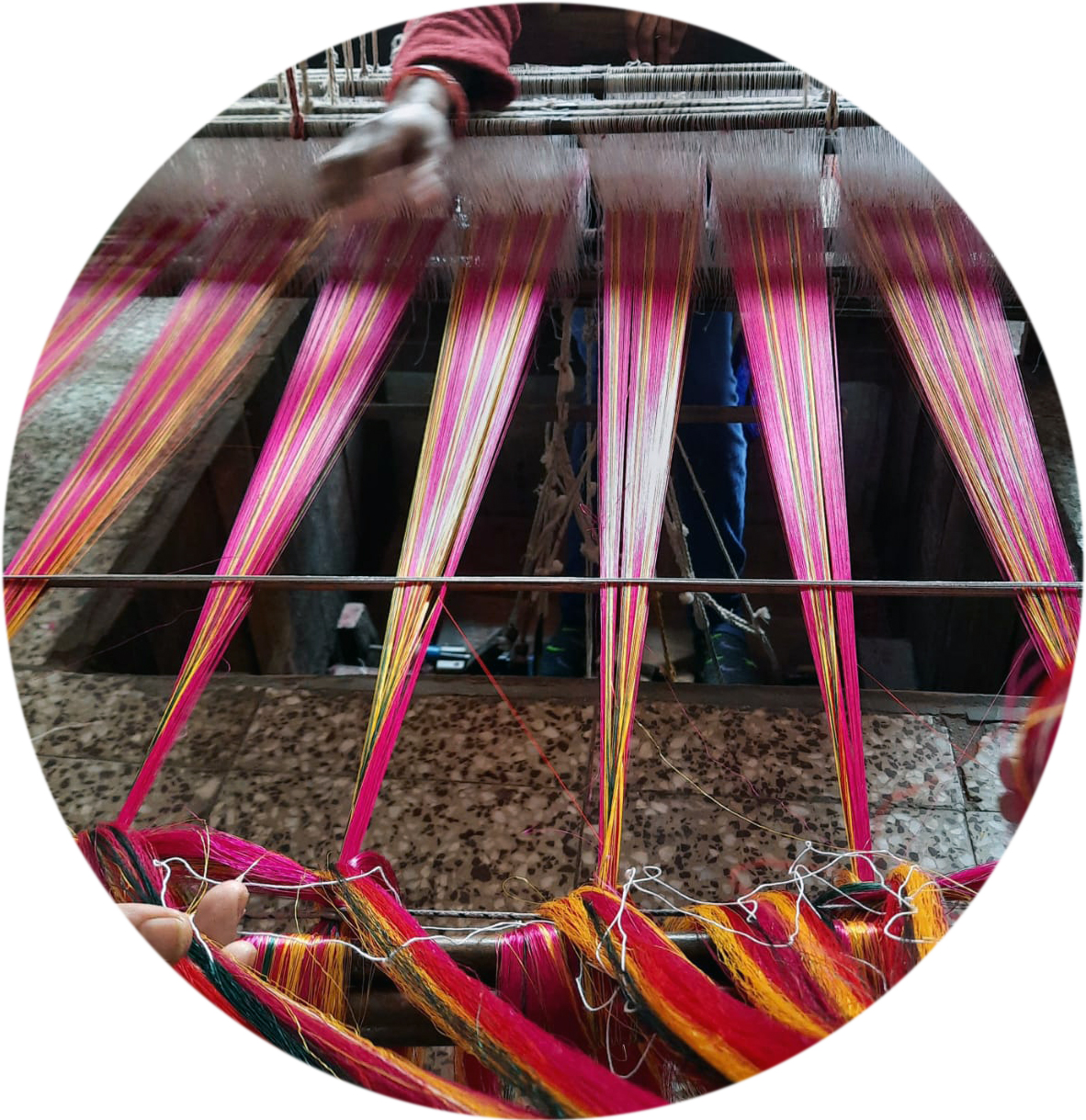In earlier times, there were restrictions on wearing silk. Since silk comes from the slaying of cocoon and silkworm, touching the fabric was considered sinful among Muslims. This led to the genesis of the Mashru fabric. Having silk on the outside and cotton on the inside, it addressed the concern of touching silk. Consequently, it was popularised in Musllim communities of West Asia because of its utility factor. Mashru became a popular fabric in the 19th century, expanding its reach to the Ottoman Empire and Gulf countries.
Today, traditional mashru weaving is on the brink of extinction.The clothing styles of the Kachchhi people have changed, severing the original community linkages.

Mashru means ‘Permitted’ in Arabic and the Sanskrit translation,‘Misru’ means ‘Mixed’.
Mashru is a vibrant and sleek fabric, and often called the master of satin finishes. Bright contrasting stripes in vibrant colors along with ikat weaves are a characteristic of Mashru fabric.It seems that the makers of this fabric put every possible color together in lustrous compositions.
Mashru has a silk exterior, but the inner fabric which stays in contact with the skin is made up of cotton. Therefore, has the appearance of glistening silk that conceals the soothing feel of cotton.While the glossy and opulent silk appeals to people with a luxurious taste, the cotton yarns keep the wearer feeling cool in warm weather conditions.

When we met Janak Bhai and his family, they taught us about the process involved in making the slowly diminishing Mashru fabric.
Mashru fabric is made up of silk and cotton yarns; where silk is used as the vertical yarn and cotton is used as the horizontal yarn. Each silk yarn goes under the cotton yarn once, and five or eight time above it. Glazing a paste of wheat flour maintains the consistency of the fresh material.This weaving technique of Mashru fabric results in a shiny surface that is identical to silk fabric and comfortable cotton on the inside of the clothing. Interweaving of silk and cotton makes Mashru a durable fabric.
After completing the weaving of the fabric, it is washed in cold water and is beaten with wooden hammer while it is moist. This step helps to remove all rumples and lumps from the starched fabric. After the fabric is beaten, it glistens.
Mashru fabric is relatively easier to maintain as compared to pure silk.
Pure resum (silk) is stronger than rayon silk




